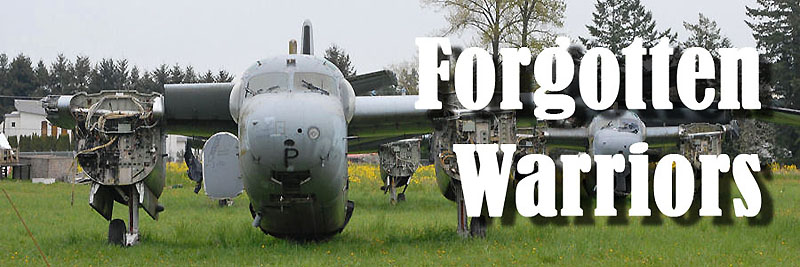
Abbotsford, BC, Canada - April 2007

In 1978, Conair Aviation introduced a highly modified air tanker conversion for the Grumman Tracker called, the Firecat. The original conversions used some ex-RCN
Trackers and featured an extensive redesign of the mid-fuselage to accomodate a new retardant tank. (Trevor McTavish)

When the Canadian Armed Forces retired their remaining Trackers, Conair bought them as a source of parts to keep their Firecats going. Some were even converted into
Firecats and Turbo Firecats for the French Government. (Trevor McTavish)

Those airframes that weren't used in the Firecat and Turbo Firecat programs have been left in open storage ever since. A very small number however have been donated to
air museums as far away as Sault Ste. Marie, Ontario. (Trevor McTavish)

The Trackers that remain in Abbotsford today are missing a wide assortment of pieces; wings, engines, landing gear, etc. (Trevor McTavish)

Today, the airframes have become covered in moss, which, while it'll eventually destroy the aluminum airframe does create an artistic finish. (Trevor McTavish)

Some of the Trackers obviously hadn't flown for a long time. Take this one for instance. Its still wearing the symmetrical markings scheme from that dated from
unification of the CAF in 1968 to the late 1980s. The CAF had probably stored this one as a spare. (Trevor McTavish)

(Trevor McTavish)

(Trevor McTavish)

(Trevor McTavish)

(Trevor McTavish)

(Trevor McTavish)

(Trevor McTavish)

(Trevor McTavish)

(Trevor McTavish)

Even those Trackers lucky enough to become Firecats haven't been immune to the effects of time. As the Firecats have been replaced as air tankers, they too have been
cannibalized for parts, most noticeably their Wright Cyclone engines. (Trevor McTavish)